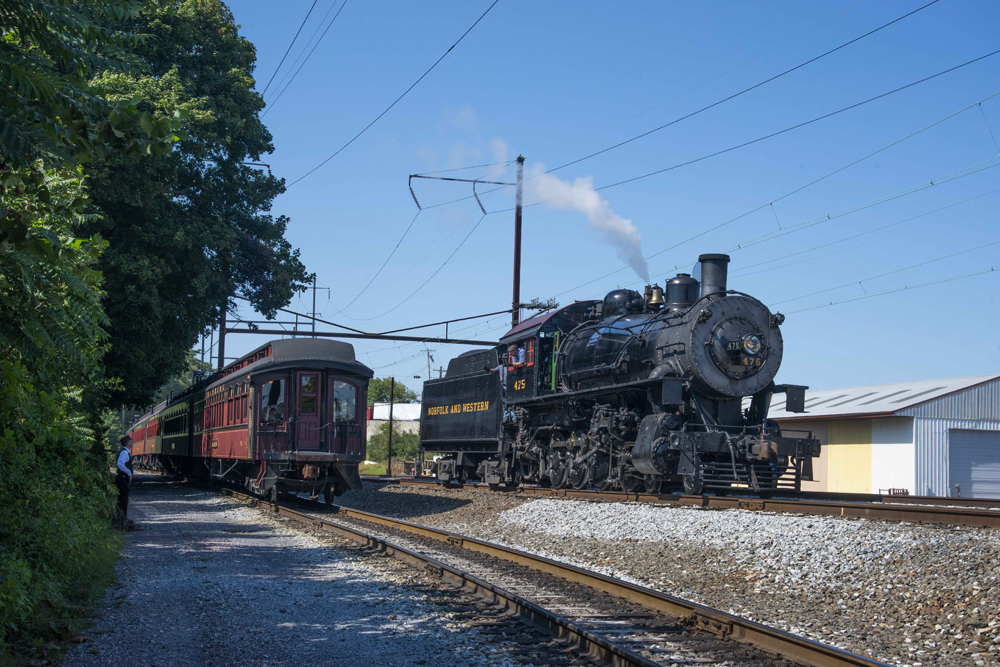
PARADISE, Pa. — Strasburg Rail Road’s 4-8-0 steam engine No. 475 collided with a tracked excavator or “trackhoe” parked on a spur Wednesday morning, Nov. 2, punching a hole in the engine’s smokebox. No injuries resulted and the engine, running light, remained on the track.
A combination of a misaligned switch — apparently left open when a maintenance crew tied down the trackhoe on the spur — and the engine crew’s failure to operate the engine at ”restricted speed” contributed to the collision.
Damaged were the smokebox front and door, some auxiliary metal pieces, and the headlight, as well as the bucket, piston, and hydraulic hoses on the trackhoe. The trackhoe arm did not pierce or deform anything vital to steam operation, such as No. 475’s flues or front flue sheet.
Operating rules define restricted speed not as a set velocity, but a method of observing the track ahead while in motion, in such a way as to be able to stop in half the distance to an obstruction, broken rail, misaligned switch or other irregularity. It applies mainly in yards and on sidings where trains or engines are moving at 10 to 15 mph max. Only where functioning block signals are in place — not the case here — and displaying that signal indication does it apply on main lines.
The accident occurred at 11:23 a.m. as the first passenger train of the day was reversing ends at the connection with Amtrak’s electrified Philadelphia-Harrisburg, Pa., Keystone Corridor, a location that is commonly called Leaman Place Junction. As is customary, the train departed the station at Strasburg with its engine running tender-first on the 4½-mile trip to Paradise. There, the train was left standing while the engine cut away and ran around to couple to the west end of the cars for the return trip. It was during this routine swapping of ends that the incident took place.
Contributing further to the situation is that, during the runaround move, the engine crew typically waves to the passengers on the standing train, potentially diverting attention from the track ahead.
The accident was widely viewed online via a Virtual Railfan streaming camera that is affixed to a pole at the exact switch involved, and also by a passenger riding the train who was taking video of the runaround movement.
After it was determined that everyone was safe, Strasburg dispatched its ex-New York Central SW8 diesel switcher No. 8618 to retrieve the passenger train, and it handled the two remaining scheduled passenger trips of the day. Afterward, No. 8618 ran to Paradise to bring No. 475 back to the Strasburg shop for examination.
Meanwhile, the railroad began firing up No. 89, a 1910 Canadian Locomotive Works 2-6-0 engine, to handle weekday trips for the remainder of this week. On Saturday and Sunday, when two trains are scheduled, No. 89 will share duties with the railroad’s third operable steam engine, No. 90, a 1924 Baldwin 2-10-0. No. 90 has 75 days remaining on its 1,472-day certification before a federally mandated inspection is required, and is expected to handle Christmas-train service before going down for overhaul.
According to sources, the damage on No. 475 looks worse than it actually is, and the shop crew believes that the engine can be repaired and back in service next week.
Federal Railroad Administration staff is expected at the railroad on Thursday to look over No. 475 and interview the crew.
Founded in 1832, Strasburg Rail Road is the oldest short line in the United States. Beginning in 1959, it was transformed from a weed-grown feeder line to the Pennsylvania Railroad into a major steam-powered excursion carrier with a machine shop that caters to many other steam railroads. Situated in the heart of Pennsylvania Dutch tourist country, it handles 250,000 to 300,000 passengers a year. It also services several freight customers.
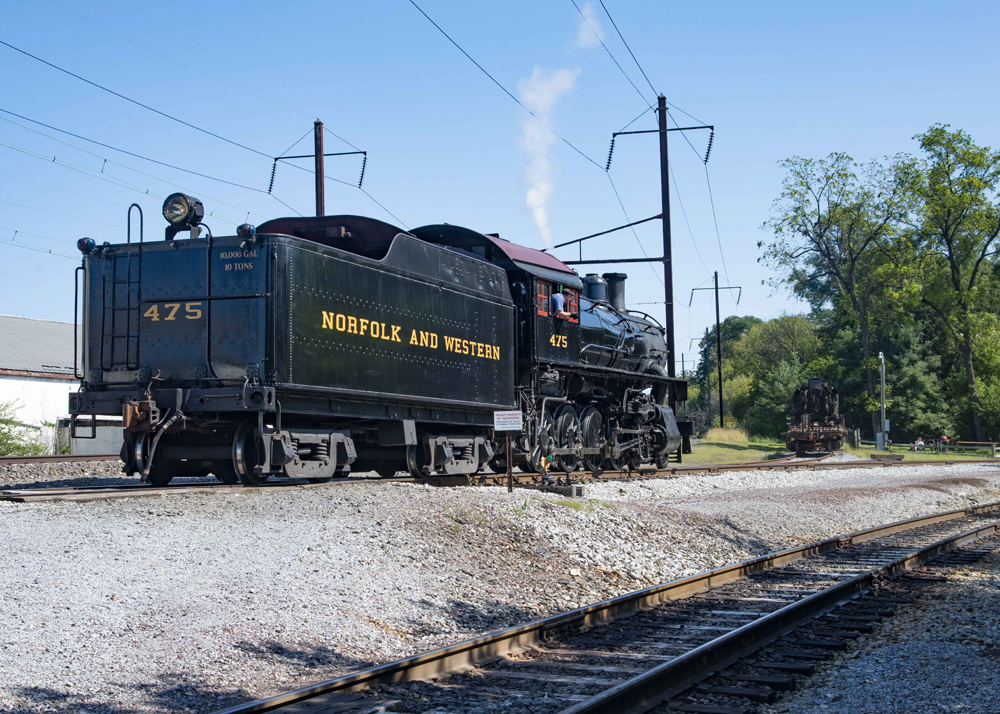






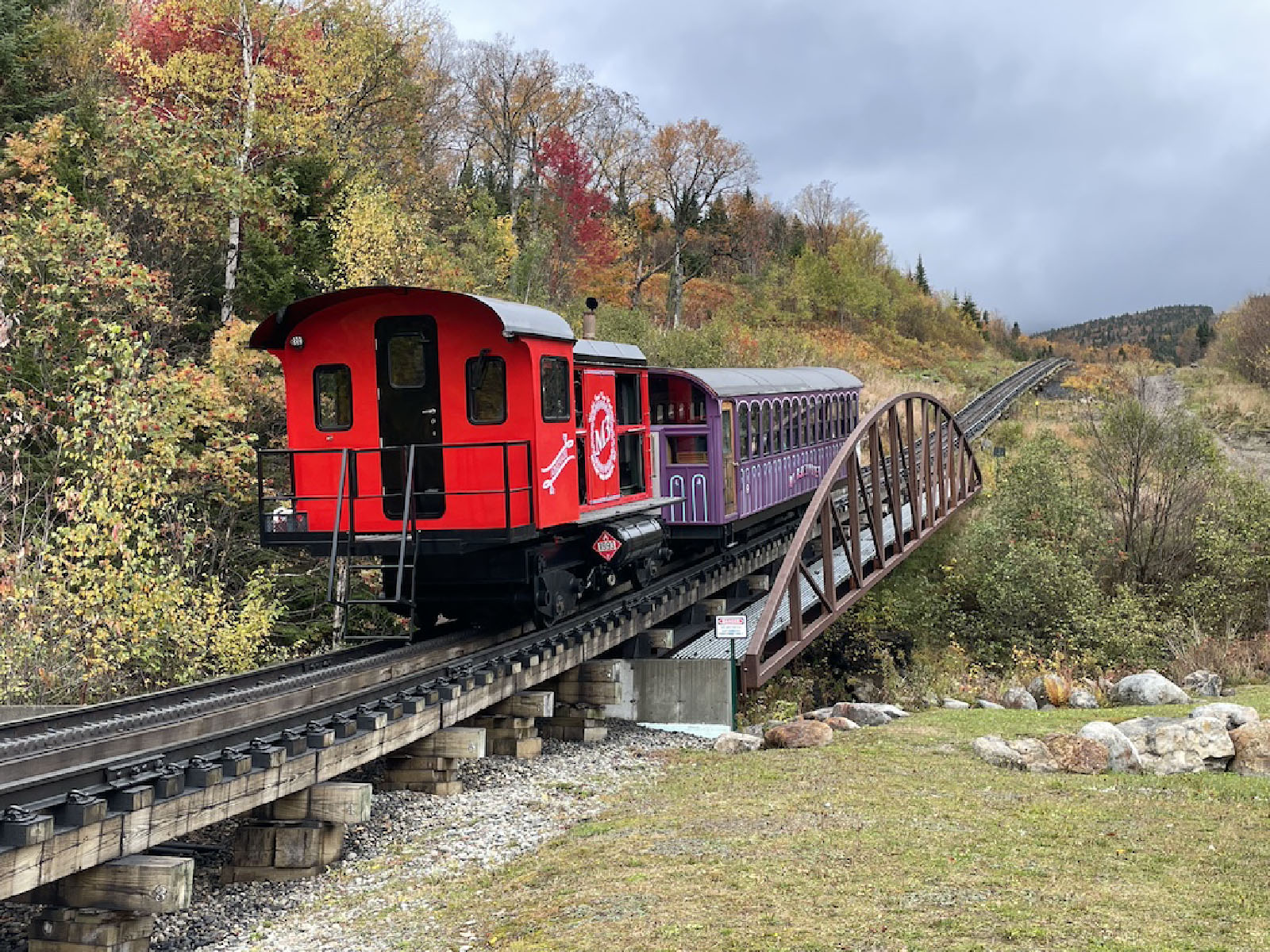
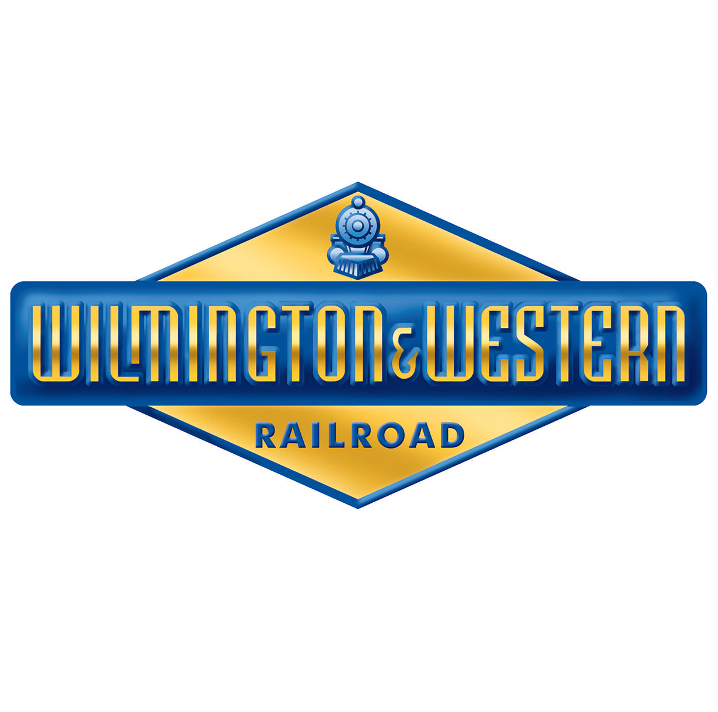
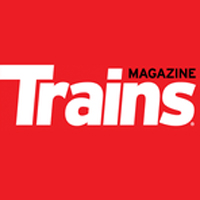
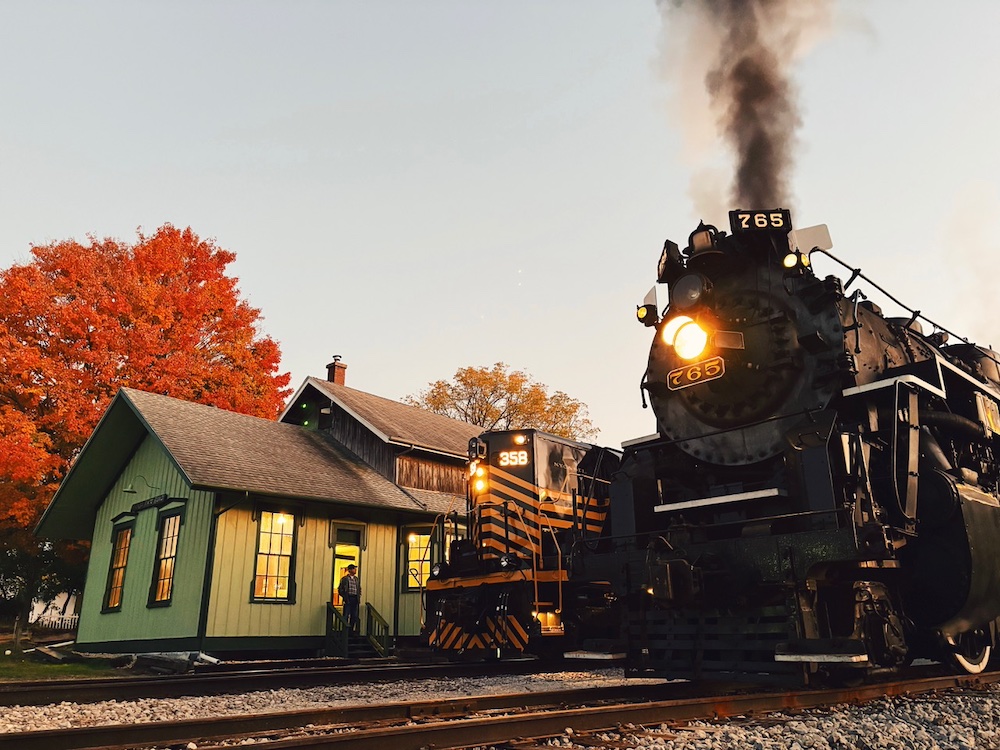




In response to everyone talking about a spring switch, there is one at the other end of this siding. I have watched Virtual Railfan of this operation numerous times. I think they show this operation at least once in every video that they post on YouTube. The spring switch allows them to exit this siding to get back on the main so they can back up and hook onto the passenger cars. Then they head back to the depot.
Repairs are currently under way on the smokebox front. SRC’s facebook page notes it is cast iron and SRC’s welders are reparing it by braze welding.
M/W set a trap by not lining away the turnout on which the eqpt. was stored. And the turnout should have been loked with a private lock.
Spring switches are useful for a trailing movement. Would have made no difference in this situation.
And they are still quite useful, and needed at certain places. They won’t be going away anytime soon.
Pretty sure one or both of the switches used for the runaround, at both ends, are spring switches on this railroad. Not having to stop and throw it twice saves quite a bit of time. But agreed, a spring switch for this spur would be pointless.
There is one at the other end of this siding to get back on the main.
Safe and professional operations are foremost above any other trivial things like train crews waving to people or bystanders along the way or even engaging in conversation while operating a train. As a railroad whether it be a tourist line or Class 1, their duty and responibility is to maintain safe operations both to their passengers and crews. We can be thankful that nobody got injured or killed in this mishap but if any future accidents keep happening like the Branson accident a few weeks ago, this can put tourist railroads out of business and turn the public away from riding on these trains. On a lighter note, if this happened on a model railroad or club layout, the offending operator would most likely be kicked out of the club and membership revoked
Joseph C. Markfelder
Would a spring switch installed at this location be a prudent response? Like all accidents, more than one error contributed to the unfortunate event.
Not really. Spring switches are outdated and from maintenance standpoint they suck.
“Typically” having the crew wave to the customers is problematic. While operating crews can dress a certain part, ultimately, their role is the safe operation of the train. Waving to people is not part of it. 99% of the time, it isn’t a problem. This time, someone else failed to do their job and set a trap for this crew. The crew was not engaged in their safety responsibilities and fell into it.
This should be a warning to heritage railway operators everywhere. Your train crews need to be professional in the way they go about their business. While many are true railroaders, others are fans playing trains. This stuff is deadly if your first job is playing railroader cosplay and safety is the second.
Your text is incorrect. Restricted Speed must be observed on Main Tracks where there is no signal system within Yard Limits or Restricted Limits. Also on Main Tracks, when entering a Main track with proper authority between signals, in addition — of course — to when proceeding on a Main Track signal indication which requires movement at Restricted Speed.
Correct. But there are many other circumstances that require operating at Restricted Speed.
the amount of drama that has come from this is insane. Even down to virtual railfain issueing copyright strikes. Holy cow……….
Hey foamers, you can stop panicking now, 475 is repairable, and it looks like the repairs won’t take that long.